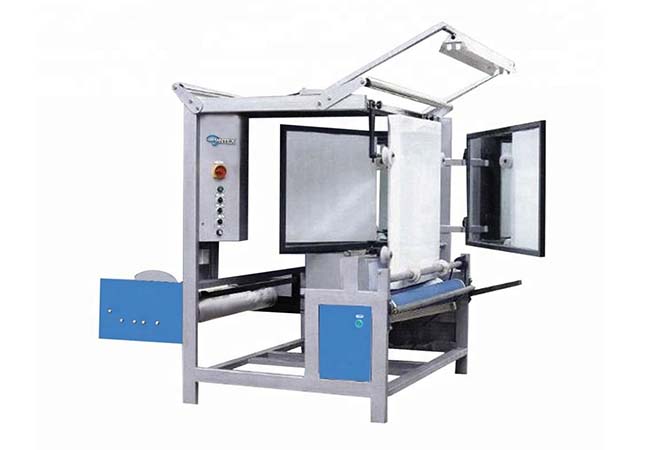In the textile industry, ensuring the quality of fabrics is of utmost importance. To maintain high standards, manufacturers employ various advanced technologies, one of which is the tubular fabric inspection machine. This remarkable piece of equipment plays a crucial role in examining fabrics for defects, ensuring consistent quality, and improving production efficiency.
Tubular fabric inspection machines are sophisticated devices designed to assess the quality of fabrics, such as knitted or woven materials, in a seamless and efficient manner. They are commonly used in textile mills, garment factories, and fabric production facilities. These machines offer numerous advantages, including enhanced quality control, increased productivity, and reduced labor costs.
Working Principles of Tubular Fabric Inspection Machines
1. Fabric Input and Tensioning: The fabric roll is mounted onto a feeding system, which precisely unwinds and feeds the fabric into the inspection machine. The fabric is then subjected to appropriate tensioning mechanisms to ensure optimal inspection accuracy.
2. Illumination System: Tubular fabric inspection machines employ powerful lighting systems, usually consisting of a combination of fluorescent, LED, or halogen lights. These lights are strategically positioned to illuminate the fabric uniformly, highlighting any defects or imperfections.
3. Inspection Area: The fabric passes through a designated inspection area, which comprises a transparent surface or a lightbox. This area allows the fabric to be examined thoroughly and facilitates the detection of defects.
4. Camera and Image Processing: High-resolution cameras capture images of the fabric as it passes through the inspection area. These cameras can be monochromatic or color-based, depending on the requirements. The captured images are then processed using specialized software that analyzes the fabric's visual data.
5. Defect Detection Algorithms: The software running on the inspection machine utilizes advanced algorithms to identify various types of defects, such as holes, stains, color variations, or irregular patterns. These algorithms compare the captured images against predefined defect parameters and generate real-time reports.
6. Automated Inspection and Sorting: Based on the analysis, the inspection machine classifies the fabric into different categories, such as first quality, second quality, or defective. It can also mark the location of defects on the fabric for further inspection or removal. Some machines can even automatically sort the fabrics based on their quality, streamlining the production process.
Benefits of Tubular Fabric Inspection Machines

l Enhanced Quality Control: Tubular fabric inspection machines offer unparalleled accuracy in detecting defects, ensuring that only high-quality fabrics reach the market. By identifying flaws early on, manufacturers can take corrective actions and prevent defective products from entering the production cycle.
l Increased Efficiency: These machines significantly reduce the need for manual inspection, resulting in improved productivity and reduced labor costs. With faster inspection speeds and real-time defect analysis, the overall production process becomes more streamlined and efficient.
l Cost Savings: By minimizing fabric waste and eliminating the production of substandard products, tubular fabric inspection machines help save costs associated with rework, returns, and customer complaints. They also reduce the reliance on manual labor, freeing up resources for other value-added tasks.
l Consistency and Standardization: These machines provide consistent and objective inspection results, eliminating the subjective variations that can occur with manual inspection. By setting predefined defect parameters, manufacturers can ensure that their fabrics meet specific quality standards consistently.
Conclusion
Tubular fabric inspection machines play a vital role in the textile industry, revolutionizing the way fabrics are examined for defects. By utilizing advanced imaging technology, powerful software, and automated sorting capabilities, these machines offer a comprehensive solution for quality control and production efficiency. With their ability to identify defects swiftly, they contribute to maintaining high-quality standards, reducing costs, and improving customer satisfaction. As technology continues to advance, we can expect further advancements in tubular fabric inspection machines, making them an indispensable asset in the textile manufacturing process.




